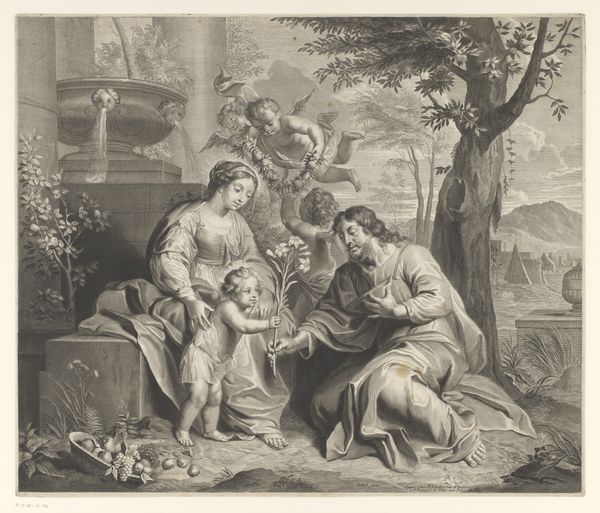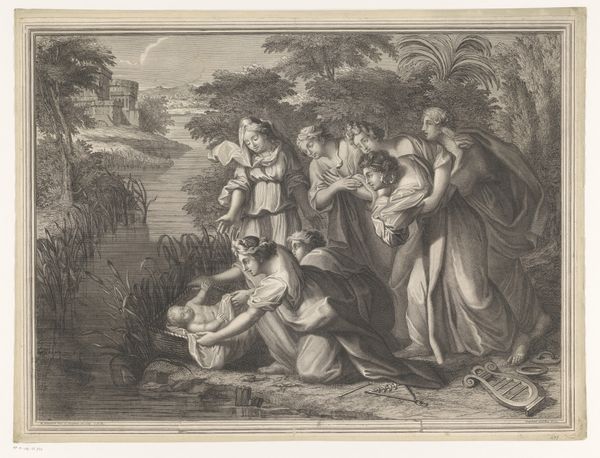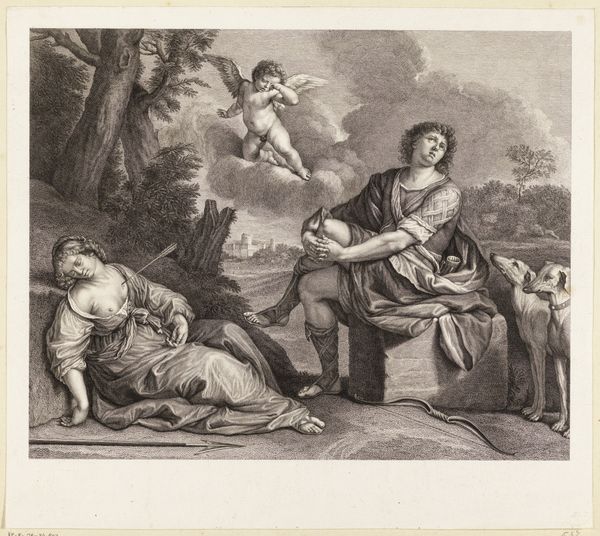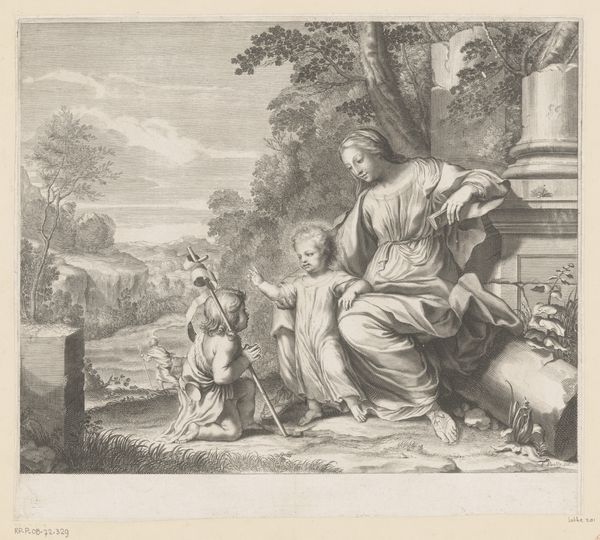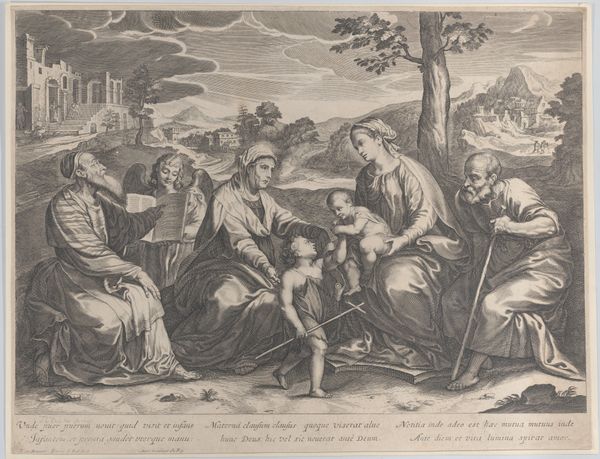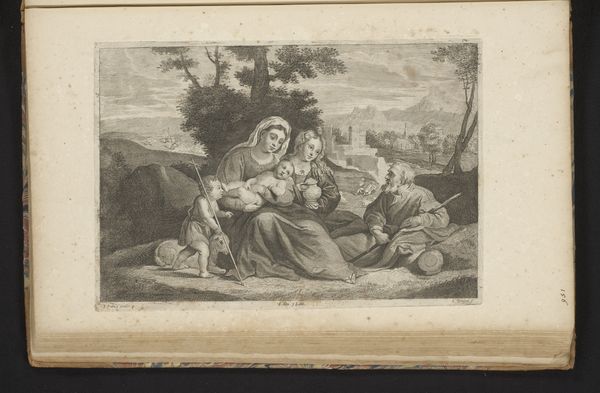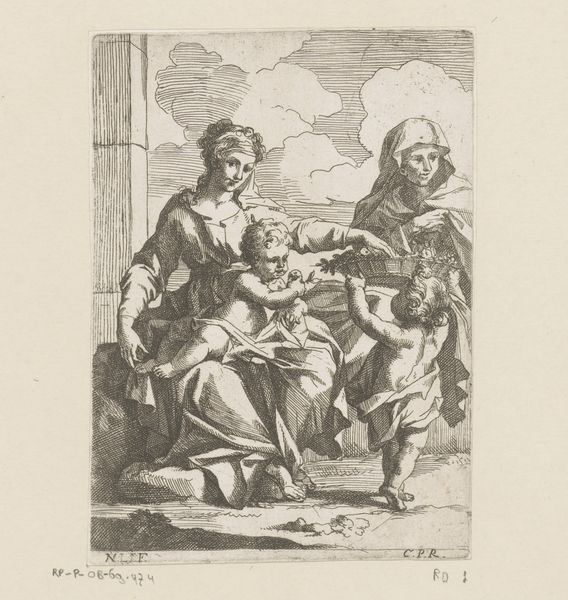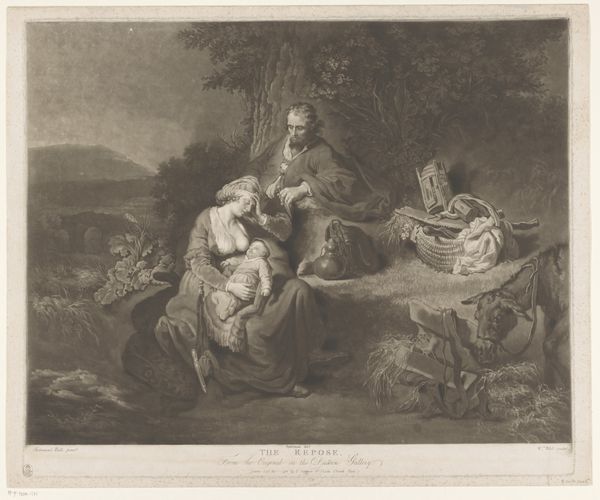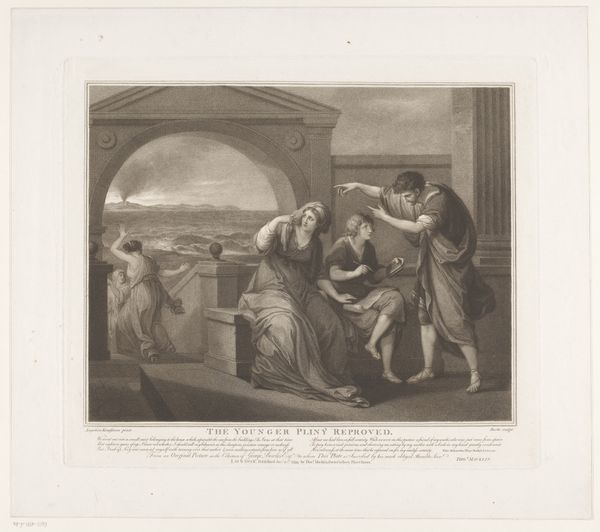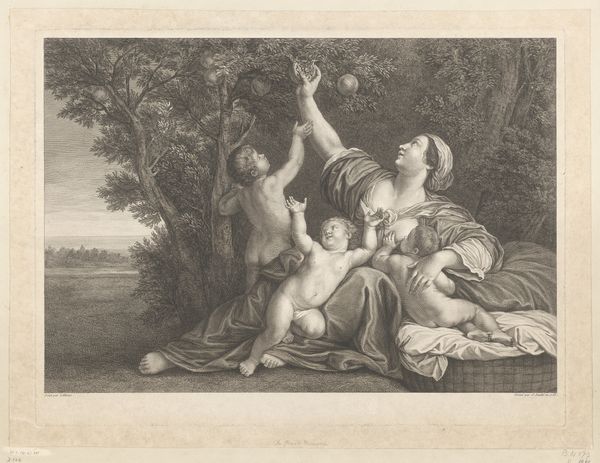
print, engraving
#
pencil drawn
#
baroque
# print
#
pencil sketch
#
charcoal drawing
#
figuration
#
charcoal art
#
pencil drawing
#
history-painting
#
engraving
Dimensions: height 392 mm, width 491 mm
Copyright: Rijks Museum: Open Domain
Editor: Here we have François de Poilly’s engraving, “Holy Family with Elizabeth and John the Baptist,” created sometime between 1632 and 1693. The figures seem so close together; what catches my eye is how the artist has played with shadow and light to create such varied textures. What elements do you find most striking in this work? Curator: Formally, I observe a sophisticated arrangement of figures within a structured space, achieving a balanced composition. Consider the artist’s use of line: see how the delicate engraving technique creates subtle variations in tone and texture? Observe how the lines contour the bodies, creating form from flatness, and activating this space with an interior energy that alludes to the figures’ emotionality. The light does seem to unify the visual. Editor: It is quite skillful, indeed. I wonder why Poilly chose to depict the figures so close, almost compressed, into the available area? Curator: The spatial compression emphasizes the figures' unity and interdependence. Also, notice how the artist guides the viewer's gaze, emphasizing narrative clarity and formal harmony above realistic scale and proportion. The very geometry of their relation underscores symbolic value. Editor: The lines around them feel a bit like a stage. I guess there are different layers and I was drawn to the fact that the subject itself seems both staged, in terms of spatial arrangement, and engaging through the masterful rendering. Curator: Yes, the setting almost becomes an extension of their familial connection, reinforcing thematic concerns about devotion and order. These intentional geometric and light constructions speak to the aesthetic priorities during its time, offering us insight into not only its appearance but the philosophical structure of seeing. Editor: It makes me consider how carefully curated the composition really is. I was so absorbed by the figures I didn’t notice the architectural framing device. Curator: Exactly, understanding visual and thematic intention makes for much more critical insight.
Comments
No comments
Be the first to comment and join the conversation on the ultimate creative platform.
